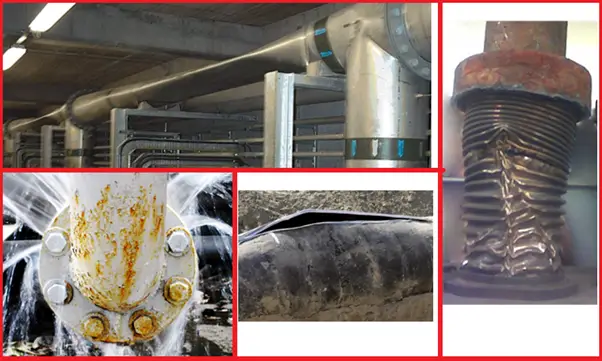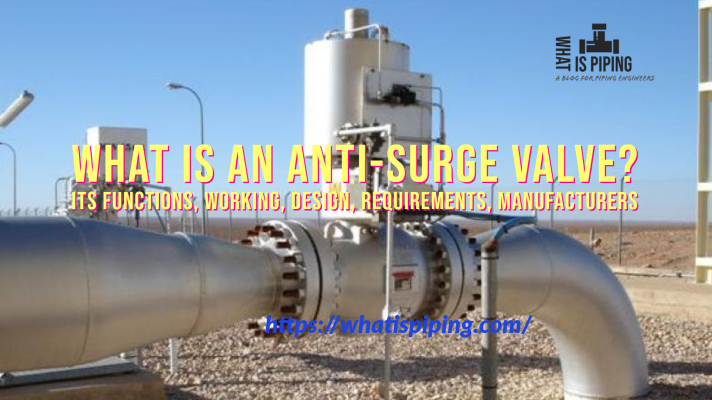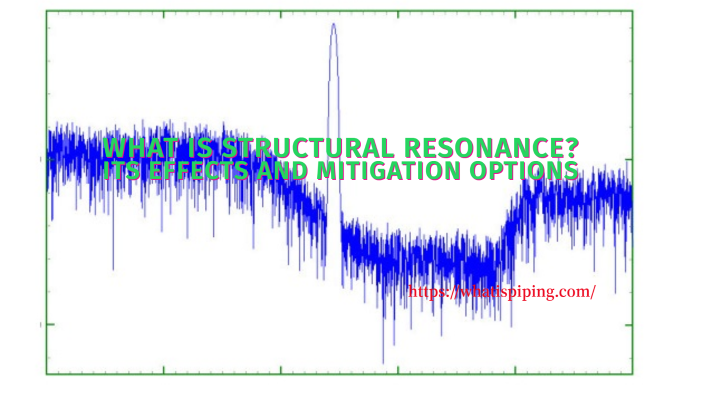In the intricate world of fluid dynamics, maintaining consistent flow and pressure is crucial for efficient and reliable operation. The pulsation and surges that often occur within fluid systems can lead to decreased efficiency, increased wear and tear, and even system failures. Thankfully, engineering ingenuity has given rise to a remarkable solution: pulsation dampeners. In this blog post, we’ll delve into the fascinating realm of pulsation dampeners, exploring their mechanisms, applications, and significance in fluid systems.
What are Pulsation Dampeners?
Pulsation dampeners, also known as pulsation dampers or surge suppressors, are devices designed to mitigate the effects of pressure fluctuations or pulsations in fluid systems. These fluctuations can be caused by various factors, such as reciprocating pumps, compressors, or even the natural characteristics of certain fluids. Pulsation dampeners work by absorbing, smoothing, and regulating the flow of fluid, ensuring a steady and consistent output. They are usually inline dampening devices that act as mounted accessories.
Types of Pulsation Dampeners
There are several types of pulsation dampeners depending on different parameters as given below:
Based on the working mechanisms to achieve their purpose, common pulsation dampener types are:
Diaphragm-Type Dampeners:
These dampeners consist of a flexible diaphragm that separates the fluid from a compressible gas, typically nitrogen. As the fluid pressure fluctuates, the diaphragm compresses or expands the gas, absorbing the pulsations and maintaining a relatively constant pressure downstream.
Bladder-Type Dampeners:
Similar to diaphragm dampeners, bladder-type dampeners use a flexible bladder to separate the fluid from a gas. The bladder expands and contracts in response to pressure variations, providing a damping effect.
Piston-Type Dampeners:
In this design, a piston moves within a cylinder containing fluid and gas. As pressure fluctuates, the piston shifts, allowing the gas to compress or expand, thus dampening the pulsations.
Again, based on how the pulsation dampeners provide the dampening effect, there are two types of pulsation dampeners; Active and Passive.
Active pulsation dampeners adjust the output based on the input flow and pressure. But the passive dampener needs the operator to pre-charge it based on the inflow pressure. Fig. 1 below shows some typical pulsation dampeners.

Working Mechanism of a Pulsation Dampener
Let’s take an example of diaphragm pump. The functionality of the Active Pulsation Dampener involves providing equilibrating pressure to counteract the pulsations generated by the pump. This equilibrating pressure is delivered precisely during the pump’s low-pressure phases, aligning with the pressure decrease that occurs between pump strokes, resulting in a pulsatile flow. Consequently, the dampener’s supplied pressure diminishes pressure fluctuations, leading to a consistent flow from your Diaphragm Pump.
Applications of Pulsation Dampeners
Pulsation dampeners find applications in a wide range of industries where fluid systems are critical, including:
- Oil and Gas: In the oil and gas industry, pulsation dampeners help stabilize flow rates, protect equipment, and prevent damage to pipelines and valves.
- Chemical Processing: Pulsation dampeners ensure consistent chemical dosing and flow rates, vital for maintaining product quality and process efficiency.
- Food and Beverage: Dampeners play a role in maintaining precise ingredient proportions and smooth product flow in food and beverage production.
- Pharmaceuticals: In pharmaceutical manufacturing, pulsation dampeners contribute to accurate and reliable dosage delivery in drug formulation processes.
- Water Treatment: Pulsation dampeners assist in maintaining optimal water treatment conditions and preventing damage to filtration systems.
Significance and Benefits
The use of pulsation dampeners offers several notable benefits:
- Improved Efficiency: By reducing pressure fluctuations, dampeners promote a more stable flow, enhancing system efficiency and reducing energy consumption.
- Extended Equipment Lifespan: Dampeners protect equipment from excessive wear and tear caused by rapid pressure changes, thus prolonging their operational lifespan.
- Enhanced Product Quality: In industries where precise flow rates are essential, pulsation dampeners contribute to consistent product quality and reliable processes.
- Safety and Reliability: Dampeners contribute to safer working conditions by preventing sudden pressure surges that could potentially damage equipment or lead to accidents.
- Reducing the Maintenance Costs and Noise Pollution resulting from equipment operation.
Differences between a Snubber and Pulsation Dampener
Snubbers and pulsation dampeners are both devices used in fluid systems to control and manage pressure fluctuations, but they serve different purposes and operate through distinct mechanisms. Let’s explore the key differences between the two:
- Purpose:
- Snubber: A snubber is primarily used to attenuate or dampen rapid pressure spikes or surges that occur in fluid systems due to sudden changes in flow or pressure. It helps to smooth out these spikes and prevent them from causing damage to sensitive equipment or instruments.
- Pulsation Dampener: A pulsation dampener, as discussed in the previous response, is specifically designed to address pulsations or fluctuations in pressure that occur at a lower frequency, often associated with reciprocating pumps or compressors. It aims to provide a consistent and steady flow of fluid by absorbing and dampening these slower pulsations.
- Mechanism:
- Snubber: Snubbers typically use restrictive orifice passages, often with a small orifice size, to slow down the rate of pressure changes. This helps to attenuate rapid pressure fluctuations and reduce the impact of sudden surges.
- Pulsation Dampener: Pulsation dampeners use various mechanisms such as diaphragms, bladders, or pistons to absorb and store excess pressure during the high-pressure phase and release it during the low-pressure phase, effectively smoothing out the pulsations and providing a more consistent flow.
- Frequency of Operation:
- Snubber: Snubbers are designed to handle high-frequency, short-duration pressure fluctuations, such as those caused by water hammers or sudden valve closures.
- Pulsation Dampener: Pulsation dampeners are effective at addressing lower-frequency pressure pulsations that occur over a longer period, typically associated with the operation of reciprocating pumps or compressors.
- Application Areas:
- Snubber: Snubbers are commonly used in industries where rapid pressure changes need to be controlled, such as in hydraulic systems, steam pipelines, or gas distribution networks.
- Pulsation Dampener: Pulsation dampeners find applications in industries where maintaining a consistent flow is essential, such as oil and gas, chemical processing, and water treatment.
In summary, while both snubbers and pulsation dampeners contribute to stabilizing fluid systems, they target different types of pressure fluctuations and operate through distinct mechanisms. Snubbers focus on attenuating rapid pressure spikes, whereas pulsation dampeners are specialized in smoothing out lower-frequency pulsations, ensuring a consistent and reliable flow.
Notable Manufacturer of Pulsation Dampeners
Several manufacturers are renowned for producing high-quality pulsation dampeners that cater to various industries and applications. Here are some notable manufacturers known for their expertise in this field:
- Blacoh Fluid Control: Blacoh is a well-respected manufacturer of fluid control products, including pulsation dampeners, surge suppressors, and industrial dampeners. They offer a wide range of solutions designed to mitigate pulsations and pressure fluctuations in various industries, including oil and gas, chemical processing, and water treatment.
- Hydracell: Hydracell, a brand of Wanner Engineering, is recognized for its innovative pulsation-dampening technologies. Their dampeners are commonly used in applications where accurate metering and consistent flow are critical, such as in metering and dosing systems.
- Almatec: Almatec, a Dover company, specializes in air-operated double diaphragm (AODD) pumps and pulsation dampeners. They offer dampeners designed to work seamlessly with their AODD pump systems, ensuring smooth and reliable fluid transfer in various industries.
- Pulsafeeder: Pulsafeeder, part of the IDEX Corporation, provides a range of fluid handling solutions, including pulsation dampeners. Their dampeners are designed to address pressure fluctuations and maintain a steady flow, particularly in chemical processing, water treatment, and oil and gas applications.
- Sandpiper: Another IDEX brand, Sandpiper, offers air-operated double diaphragm pumps and associated pulsation dampeners. Their dampeners contribute to reducing pressure fluctuations and enhancing the performance of their AODD pump systems.
- Dosatron: Dosatron specializes in water-powered dosing technology and offers pulsation dampeners as part of its product portfolio. Their dampeners are designed to ensure accurate and consistent dosing in applications such as agriculture, irrigation, and industrial processes.
- Flotronic Pumps: Flotronic Pumps is known for its eccentric diaphragm pumps and dampeners. Their pulsation dampeners are designed to provide steady flow rates, making them suitable for applications requiring accurate metering and dosing.
- OBL: OBL specializes in peristaltic pumps and related accessories, including pulsation dampeners. Their dampeners help maintain a smooth flow in applications where peristaltic pumps are used, such as in medical equipment and laboratory processes.
Pulsation Dampener vs Vibration Dampener
Here’s a comparison table outlining the key differences between a pulsation dampener and a vibration dampener:
| Aspect | Pulsation Dampener | Vibration Dampener |
|---|---|---|
| Purpose | Mitigates pressure fluctuations (pulsations) in fluid systems. | Reduces or absorbs mechanical vibrations or oscillations. |
| Mechanism | Absorbs and dampens pressure pulsations using diaphragms, bladders, or pistons. | Absorbs or dissipates mechanical vibrations using materials with damping properties. |
| Frequency | Targets lower-frequency pressure fluctuations (often associated with reciprocating pumps or compressors). | Addresses mechanical vibrations that occur at various frequencies. |
| Application Areas | Commonly used in fluid systems such as pumps, compressors, and pipelines to ensure consistent flow. | Applied to structures, machinery, and equipment to reduce vibrations and prevent damage. |
| Impact on System | Ensures a steady flow and prevents damage to downstream equipment. | Protects equipment from wear, improves reliability, and reduces noise. |
| Components | May include diaphragms, bladders, gas chambers, and connecting fittings. | Can consist of elastomeric materials, springs, dampening compounds, and mounts. |
| Examples of Use | Oil and gas, chemical processing, water treatment, and pharmaceutical industries. | Automotive suspension systems, machinery mounts, chemical industries, and building structures. |
| Effect on Performance | Enhances system efficiency, extends equipment lifespan, and promotes consistent product quality. | Improves equipment reliability, reduces wear, minimizes noise, and prevents structural damage. |
| Installation and Sizing | Requires proper sizing and installation to match the flow and pressure characteristics of the system. | Sizing and installation depend on the specific application and type of vibration being addressed. |
What is a Hydraulic Pulsation Dampener?
A hydraulic pulsation dampener, also known as a hydraulic accumulator, is a specialized device used in hydraulic systems to reduce or eliminate pressure pulsations and surges that can occur during the operation of hydraulic equipment, such as pumps, valves, and actuators.
Hydraulic systems involve the transmission of power using pressurized fluid (usually oil). When hydraulic components operate, they can generate pressure fluctuations, or pulsations, in the hydraulic fluid. These pulsations can lead to undesirable effects such as noise, vibration, reduced efficiency, and potential damage to the hydraulic system.
A hydraulic pulsation dampener works by using its internal design to absorb and smooth out these pressure pulsations. It typically consists of a chamber containing hydraulic fluid and a gas (usually nitrogen). As pressure pulsations enter the dampener, the gas compresses or expands, absorbing excess pressure during high-pressure phases and releasing it during low-pressure phases. This process helps to dampen the pulsations and deliver a more consistent and steady flow of hydraulic fluid downstream.
Key features and benefits of hydraulic pulsation dampeners include:
- Vibration and Noise Reduction: By dampening pressure pulsations, hydraulic pulsation dampeners can significantly reduce vibration and noise generated by hydraulic systems, contributing to a quieter and more stable operation.
- Extended Equipment Lifespan: The reduction of pressure fluctuations helps protect hydraulic components from wear and fatigue, potentially extending their operational lifespan.
- Improved Efficiency: Hydraulic pulsation dampeners contribute to smoother and more consistent fluid flow, which can lead to improved overall system efficiency.
- Stable Control: In hydraulic systems where precise control is crucial, the use of pulsation dampeners helps maintain accurate and reliable control over hydraulic actuators and valves.
- Prevention of Cavitation: Pressure fluctuations in hydraulic systems can lead to cavitation, which can damage components. Pulsation dampeners can mitigate this risk by stabilizing fluid pressure.
Hydraulic pulsation dampeners come in various designs and sizes to accommodate different hydraulic system requirements. They are commonly used in industries such as manufacturing, construction, automotive, and aerospace, where hydraulic systems play a critical role in powering and controlling machinery and equipment.
It’s important to properly size and install hydraulic pulsation dampeners to match the specific hydraulic system’s characteristics and operational needs for optimal performance and effectiveness.
Conclusion
Pulsation dampeners are unsung heroes in the world of fluid dynamics, quietly ensuring the smooth operation of critical systems across a diverse range of industries. These ingenious devices help maintain consistent flow rates, protect equipment, and enhance efficiency, all while contributing to safer and more reliable processes. As technology advances, we can expect further innovations in pulsation dampener design, continuing to shape the way we manage fluid systems and harness the power of fluid dynamics.








